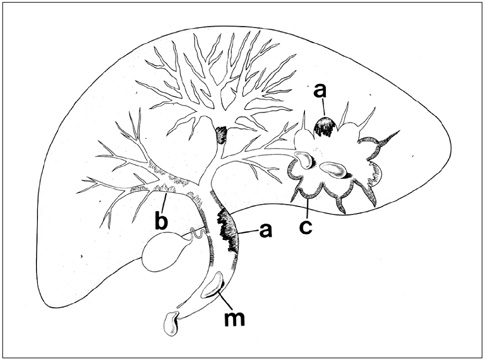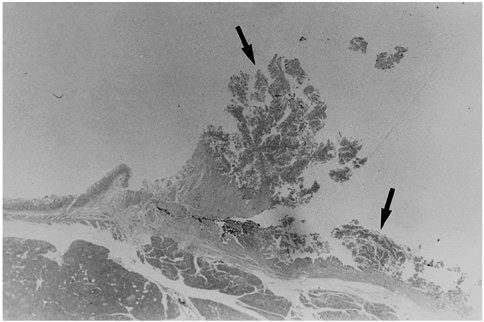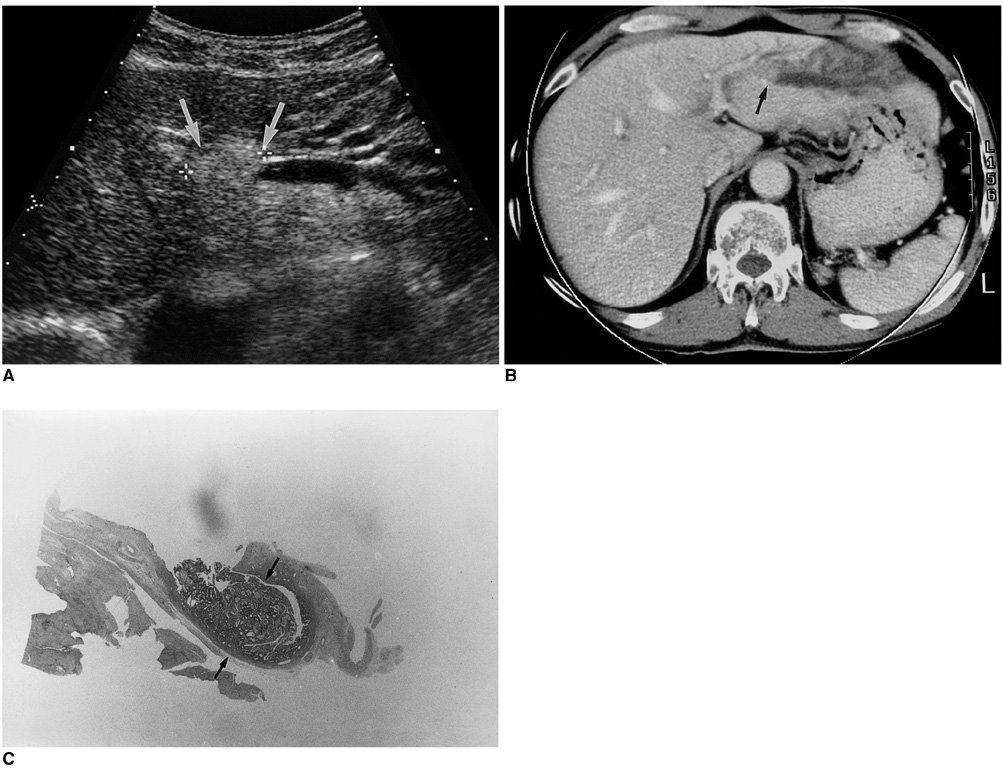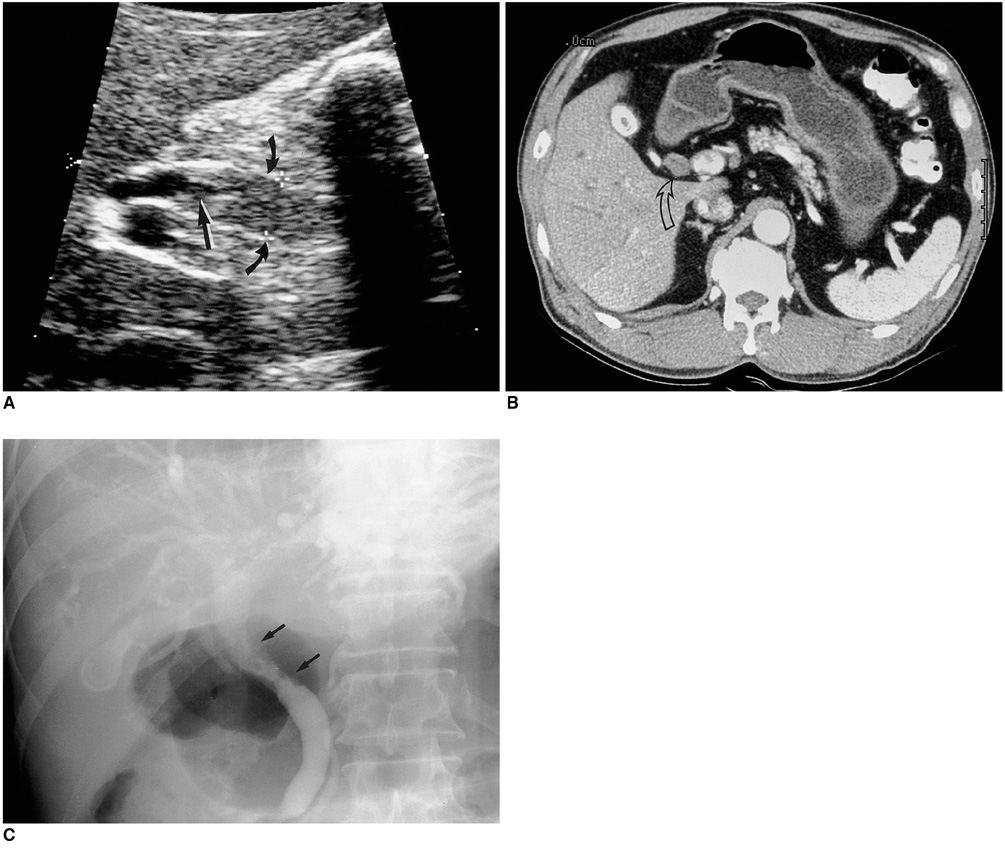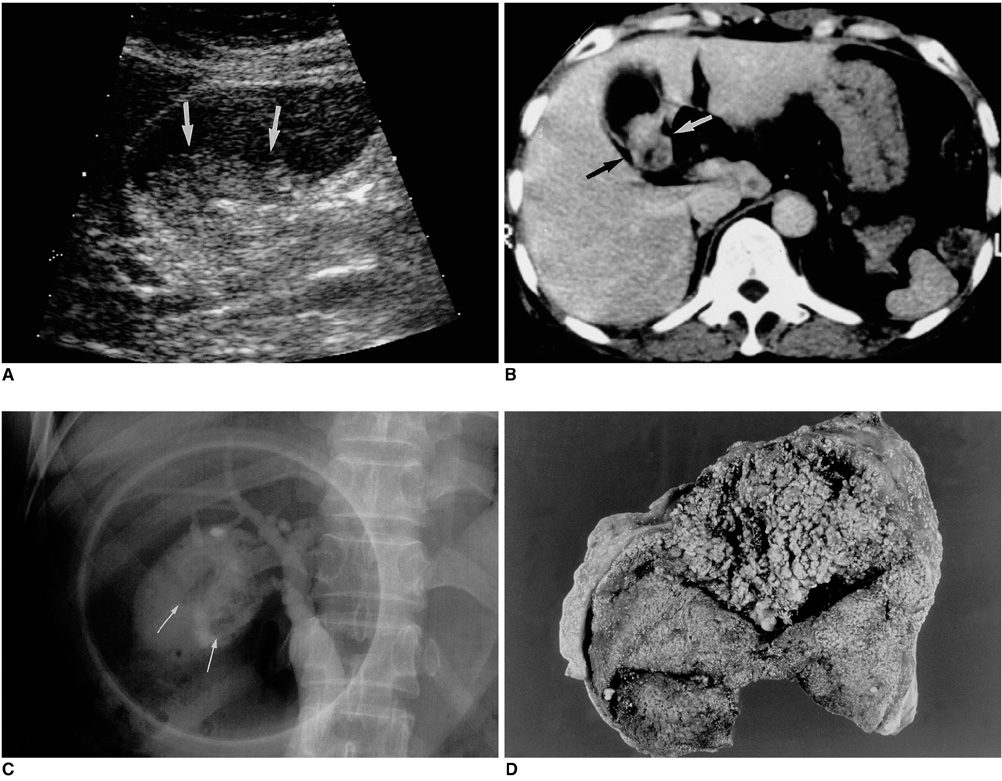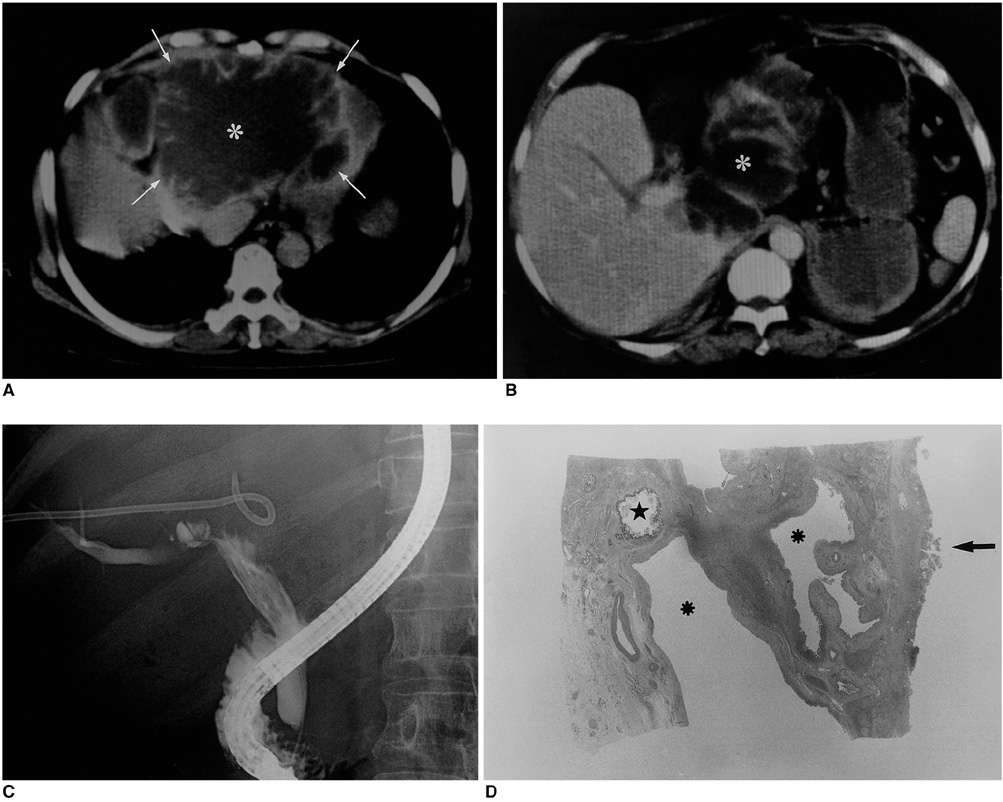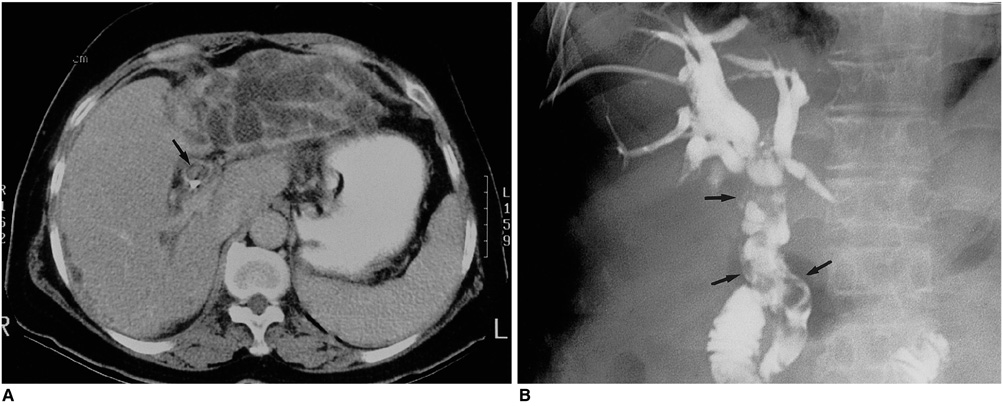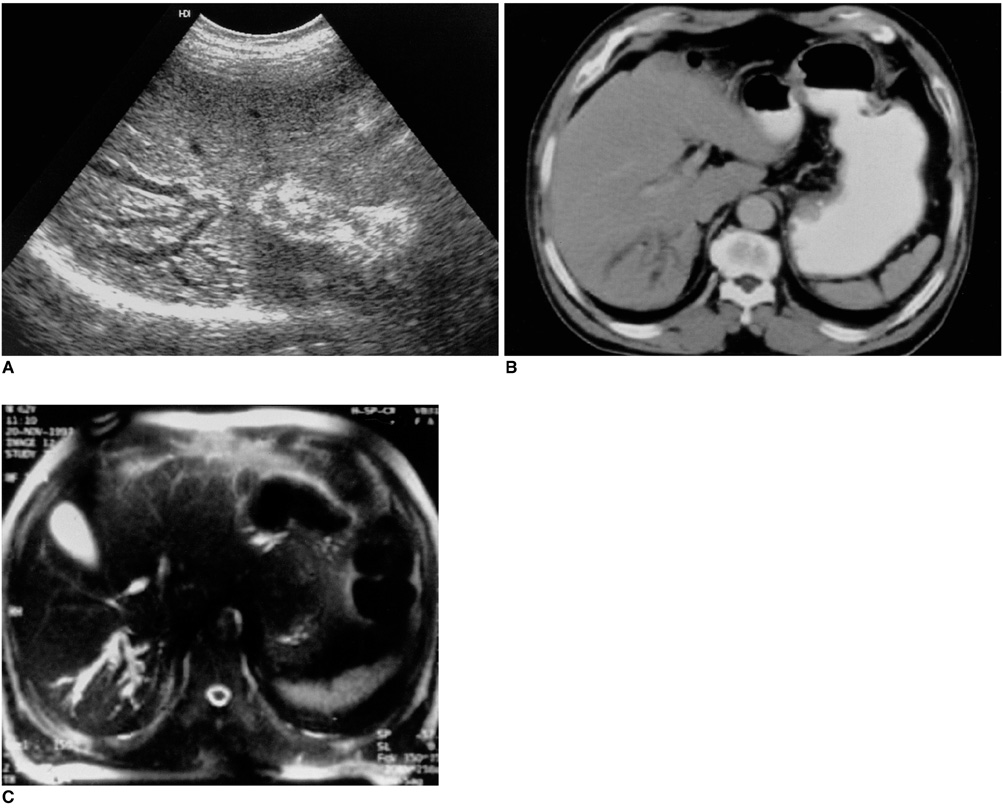Korean J Radiol.
2002 Mar;3(1):57-63. 10.3348/kjr.2002.3.1.57.
Radiological Spectrum of Intraductal Papillary Tumors of the Bile Ducts
- Affiliations
-
- 1Department of Radiology, Samsung Medical Center, Sungkyunkwan University School of Medicine, Seoul, Korea. jhlim@smc.samsung.co.kr
- KMID: 1758448
- DOI: http://doi.org/10.3348/kjr.2002.3.1.57
Abstract
- Papillary tumor of the bile duct is characterized by the presence of an intraductal tumor with a papillary surface comprising innumerable frondlike infoldings of proliferated columnar epithelial cells surrounding slender fibrovascular stalks. There may be multiple tumors along the bile ducts (papillomatosis or papillary carcinomatosis), which are dilated due to obstruction by a tumor per se, by sloughed tumor debris, or by excessive mucin. Radiologically, the biliary tree is diffusely dilated, either in a lobar or segmental fashion, or aneurysmally, depending on the location of the tumor, the debris, and the amount of mucin production. A tumor can be depicted by imaging as an intraductal mass with a thickened and irregular bile duct wall. Sloughed tumor debris and mucin plugs should be differentiated from bile duct stones. Cystically or aneurysmally, dilated bile ducts in mucin-hypersecreting variants (intraductal papillary mucinous tumors) should be differentiated from cystadenoma, cystadenocarcinoma and liver abscess.
Keyword
MeSH Terms
Figure
Reference
-
1. Kim YS, Myung SJ, Kim SY, et al. Biliary papillomatosis: clinical, cholangiographic and cholangioscopic findings. Endoscopy. 1998. 30:763–767.2. Kawakatsu M, Vilgrain V, Zins M, Vullierme M-P, Belghiti J, Menu Y. Radiologic features of papillary adenoma and papillomatosis of the biliary tract. Abdom Imaging. 1997. 22:87–90.3. Lee JW, Han JK, Kim TK, et al. CT features of intraductal intrahepatic cholangiocarcinoma. AJR. 2000. 175:721–725.4. Yoon K-H, Ha HK, Kim CG, et al. Malignant papillary neoplasms of the intrahepatic bile ducts: CT and histopathologic features. AJR. 2000. 175:1135–1139.5. Kim HJ, Kim MH, Lee SK, et al. Mucin-hypersecreting bile duct tumor characterized by a striking homology with an intraductal papillary mucinous tumor (IPMT) of the pancreas. Endoscopy. 2000. 32:389–393.6. Hubens G, Delvaux G, Willems G, Bourgain C, Kloppel G. Papillomatosis of the intra- and extrahepatic bile ducts with involvement of the pancreatic duct. Hepatogastroenterology. 1991. 38:413–418.7. Lim JH, Kim YI, Park CK. Intraductal mucosal-spreading, mucin-producing, peripheral cholangiocarcinoma of the liver. Abdom Imaging. 2000. 25:89–92.
- Full Text Links
- Actions
-
Cited
- CITED
-
- Close
- Share
- Similar articles
-
- Intrahepatic and extrahepatic intraductal papillary neoplasms of bile duct
- Photodynamic Therapy Followed by Left Hepatectomy Used to Treat an Intraductal Papillary Mucinous Neoplasm of the Bile Duct
- Intraductal Papillary Mucinous Tumor Simultaneously Involving the Liver and Pancreas: A Case Report
- A Case of Mucin - hypersecreting Tumors of Pancreas and Bile Duct with Inflammatory Choledocho - pancreatic Fistula
- A huge intraductal papillary neoplasm of the bile duct treated by right trisectionectomy after right portal vein embolization

